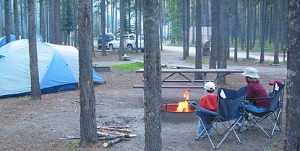Hydrostatic head is the pressure in a liquid at any point established in terms of its vertical column height. Pressure, or unit-area force on its part refers to that force applied to unit surface area, which is measured as dynes in terms of cgs units, or represented as the SI unit of Pascal. HH or Hydrostatic head is a method of evaluating the waterproof ability possessed by a certain fabric piece.
In establishing the measurement, a manufacturer takes a clear tube, and then clamps material over at the bottom end. Thereafter, the tube is filled with water slowly, and observed to determine what height may be attained on tent material before its starts leaking. A 2000mm rating of hydrostatic head implies that your water column was at 2m tall prior to leaking.
In reality, a 1000mm measurement is needed in order to obtain sufficient resistance to light showers. Driving wind, as well as heavy rain have tendency of creating more pressure on fabric, therefore, resulting to a value that is higher than 2000mm.
Sometimes, this level may be exceeded, as could occur with certain tents that exhibit as much as 1000mm head rating. Tent material in such case may survive against effects of raging water that could happen when humans or vegetation rub against it.
Pressure on material can be quite intensive when you sit, sleep, or walk on ground sheet, by example, occasioning a hydrostatic head rating of at least 5000mm. The water level achieved should curve up the edges as well in order to prevent seeping over of rainwater on its top. Canvas tents are not tested for HH, and function differently via surface tension and treatments, for them to achieve waterproofing.
Do not compare hydrostatic head measurements for tents with those obtained for clothing materials because the latter rubs on itself, rough surfaces, and backpack. This effect requires higher rating for good pressure resistance to be attained. To measure HH, divide water pressure by 9.81 that gives what number of Newtons are exerted by gravity per kilogramme. For instance, if liquid is under 30,000 Pascals of pressure, its hydrostatic head measurement is 30,000 divided by 9.81, equaling 3058.1 kg/².
Divide your answer then by water density, which is 1000, measured in terms of kilogrammes per metre cubed. This gives you 3.0581m. Lastly, multiply your result by 3.28, the figure expressing how many feet are present in one metre. The answer you get, 10.03, is hydrostatic head measurement.




